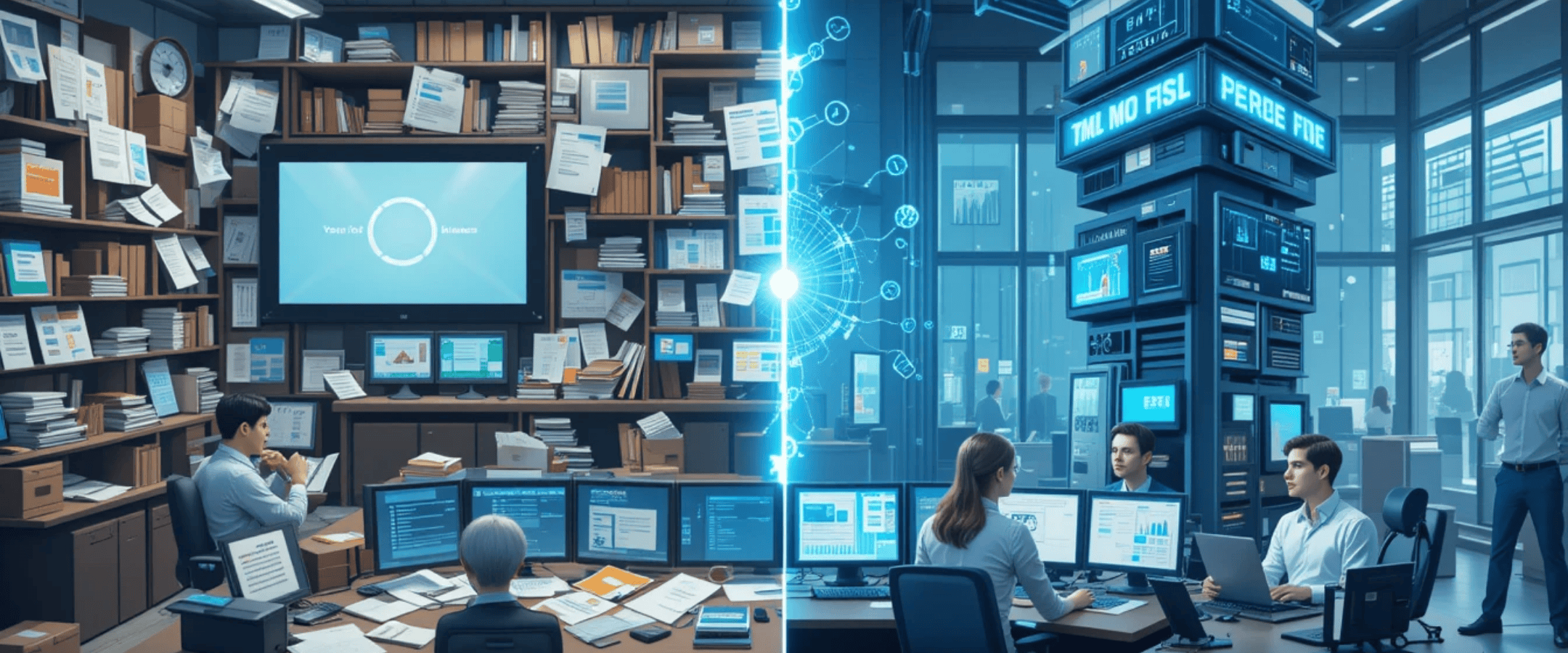
In 2025, most supply chain teams aren’t just struggling to keep up, they’re working harder to stay in the same place. Exception handling is manual. Updates come through emails. Spreadsheets do the heavy lifting.
And while technologies like AI control towers are making waves, too many operations are still held together with reactive processes and tribal knowledge.
The question is no longer whether automation belongs in the supply chain. After years of unprecedented volatility from the pandemic bullwhip to geopolitical disruptions in the Red Sea, the question for 2025 is how fast you can implement it. Customer expectations for speed and transparency, shaped by the likes of Amazon, are now B2B standards. Meanwhile, AI and machine learning technologies have finally matured beyond hype, offering tangible, accessible tools for prediction and control. Sticking with manual processes is no longer just inefficient; it's a competitive disadvantage.
Let’s break it down.
Even in well-run organizations, supply chains are full of people whose day-to-day looks something like this:
These aren’t edge cases. They’re everyday operations. And they carry a steep price.
Manual exception handling and data chasing don't just create fatigue; they directly impact the bottom line. So, implementing automation in your operation aren't just operational hiccups; they are significant, measurable cost drivers hiding in plain sight.
3 Common Signs You’re Stuck in Manual Mode:
Just Consider this as common scenario: A shipment of critical components for a new product launch is due from a supplier in Vietnam. The ETA in your system is tomorrow, but the customer service team just flagged a potential stockout.
In a manual setup, your logistics coordinator spends the next three hours:
Finally, they discover the container was held for a random customs inspection and will be delayed by five days, jeopardizing the entire product launch. This single exception just burned half a day of skilled labor and created a major business risk, a problem that automated, real-time tracking could have flagged proactively three days earlier.
Read also: 5 Hidden Cost Centers in Your Supply Chain (and How to Eliminate Them)
Here’s the irony: most supply chains have the data they need. But it's locked inside disconnected systems such as WMS, TMS, ERP, spreadsheets, and portals that don't talk.
This makes even basic automation efforts harder. Because you can’t automate what you can’t see.
That’s why visibility and automation are two sides of the same coin. You can't automate what you can't see. This is where modern visibility platforms, often called control towers, have become essential. By design, solutions like Elyxr's Supply Chain Control Tower unify these disparate data sources like WMS, TMS, ERP, and supplier portals into a single source of truth. This doesn't just give teams a dashboard; it creates the foundation for triggerable workflows that shrink the time between insight and action to nearly zero.
Supply chain automation isn’t just about robotic arms or warehouse drones.
In 2025, the most impactful forms of automation are software-first, fast to deploy, and laser-focused on operational friction.
Examples include:
The companies leading in supply chain performance today didn’t “go full autonomous.” They started by automating the right problems and built momentum from there.
Read also: AI-Powered Supply Chains Through Automation and Intelligent Insights
With the right systems in place, supply chains evolve from:

This isn’t a vision for the future. It’s what modern supply chains are already doing today.
At Elyxr, we’ve designed our Supply Chain Control Tower to help teams:
And the best part? You don’t need to rip and replace your systems. Elyxr connects with your existing stack and builds automation around your real-world workflows.
Read also: Building Resilience and Trust in Complex Global Supply Chains
You don’t need to automate everything. But you do need to stop putting it off.
Here’s where to begin:
Supply chain leaders aren’t just buying software in 2025, they’re buying back time, clarity, and confidence.
Manual chaos is still common. But it’s no longer the cost of doing business.
Smart automation, done right, frees your teams to move faster, see earlier, and operate better.
Read also: The State of Supply Chain Visibility in 2025